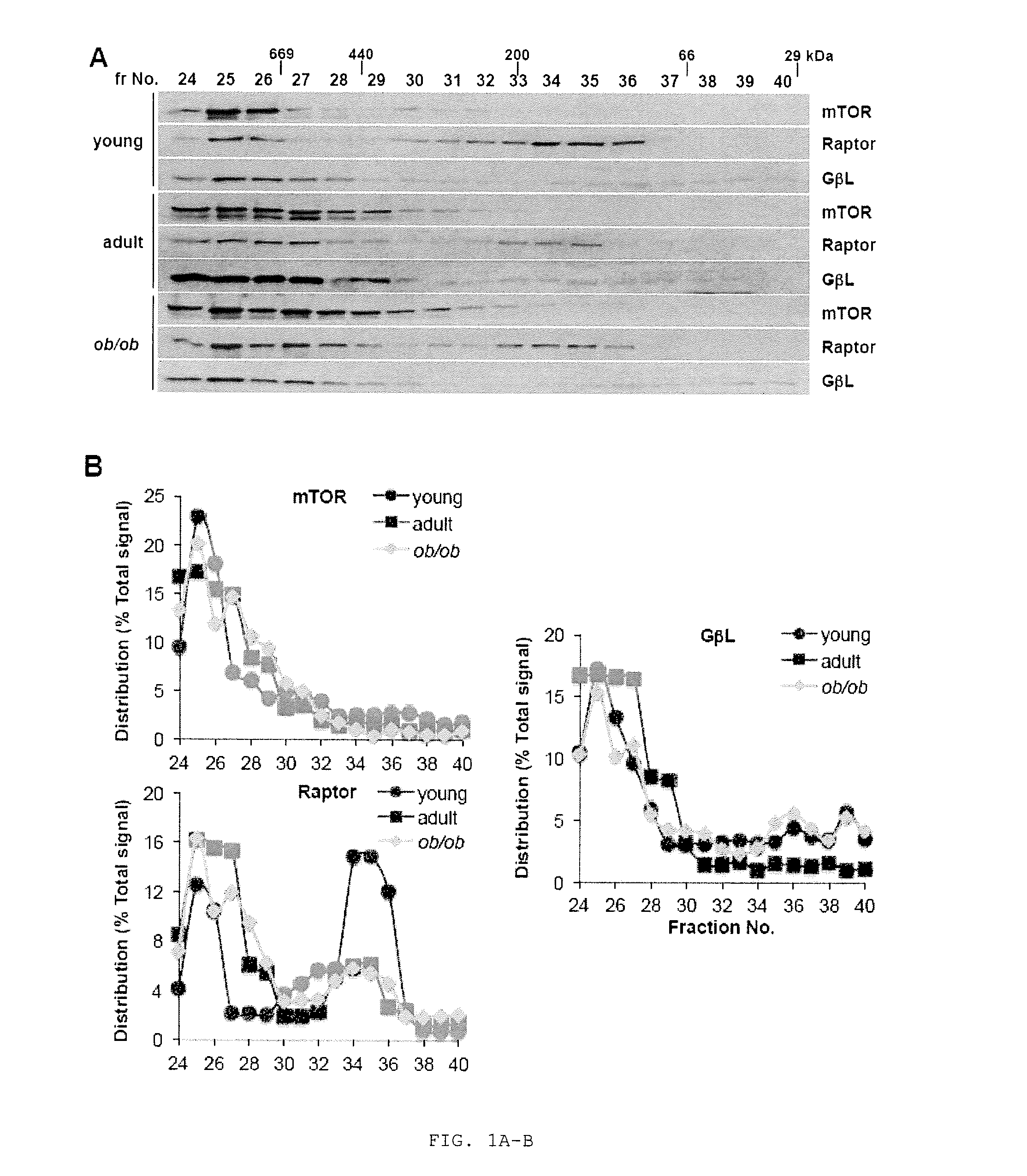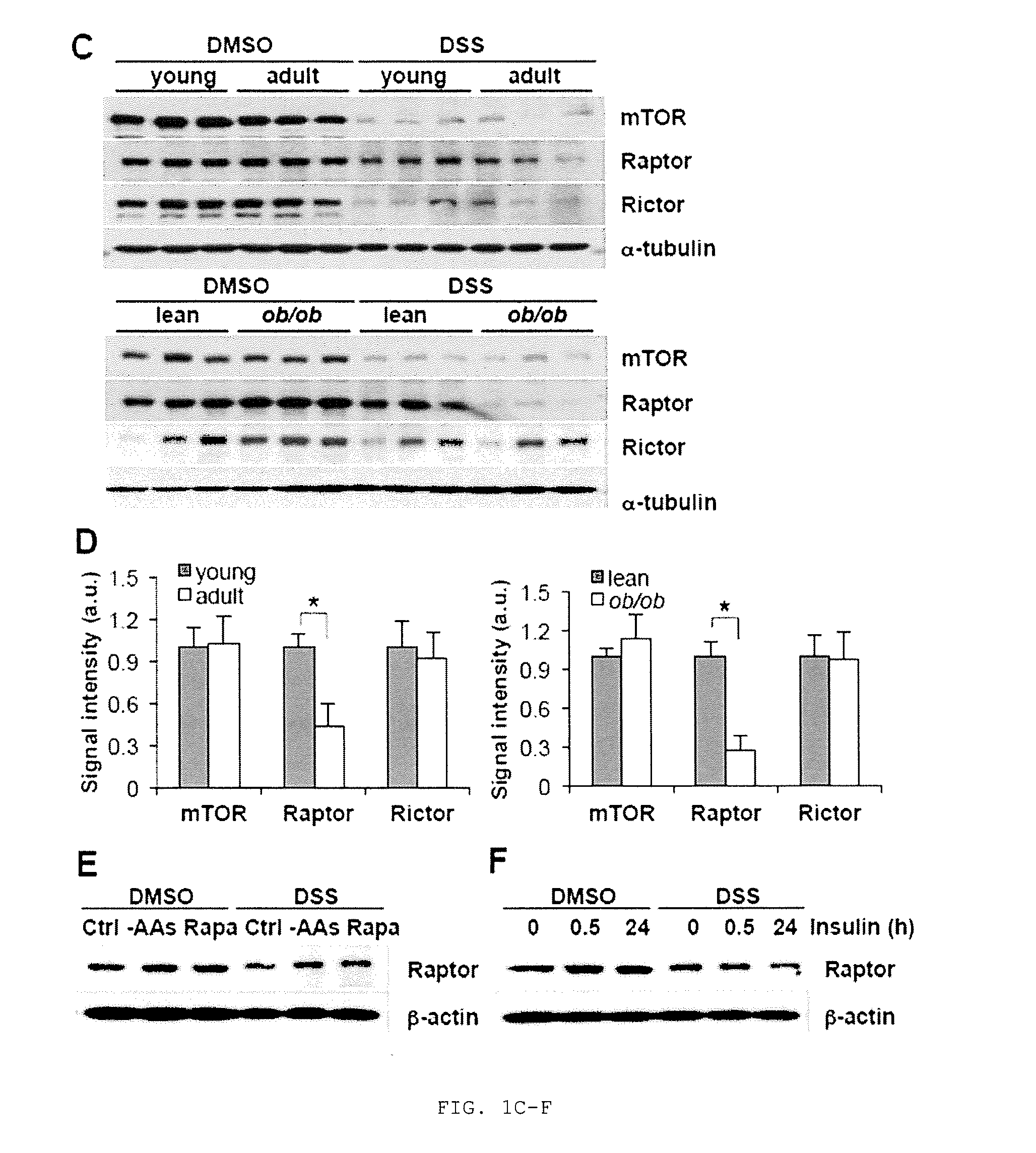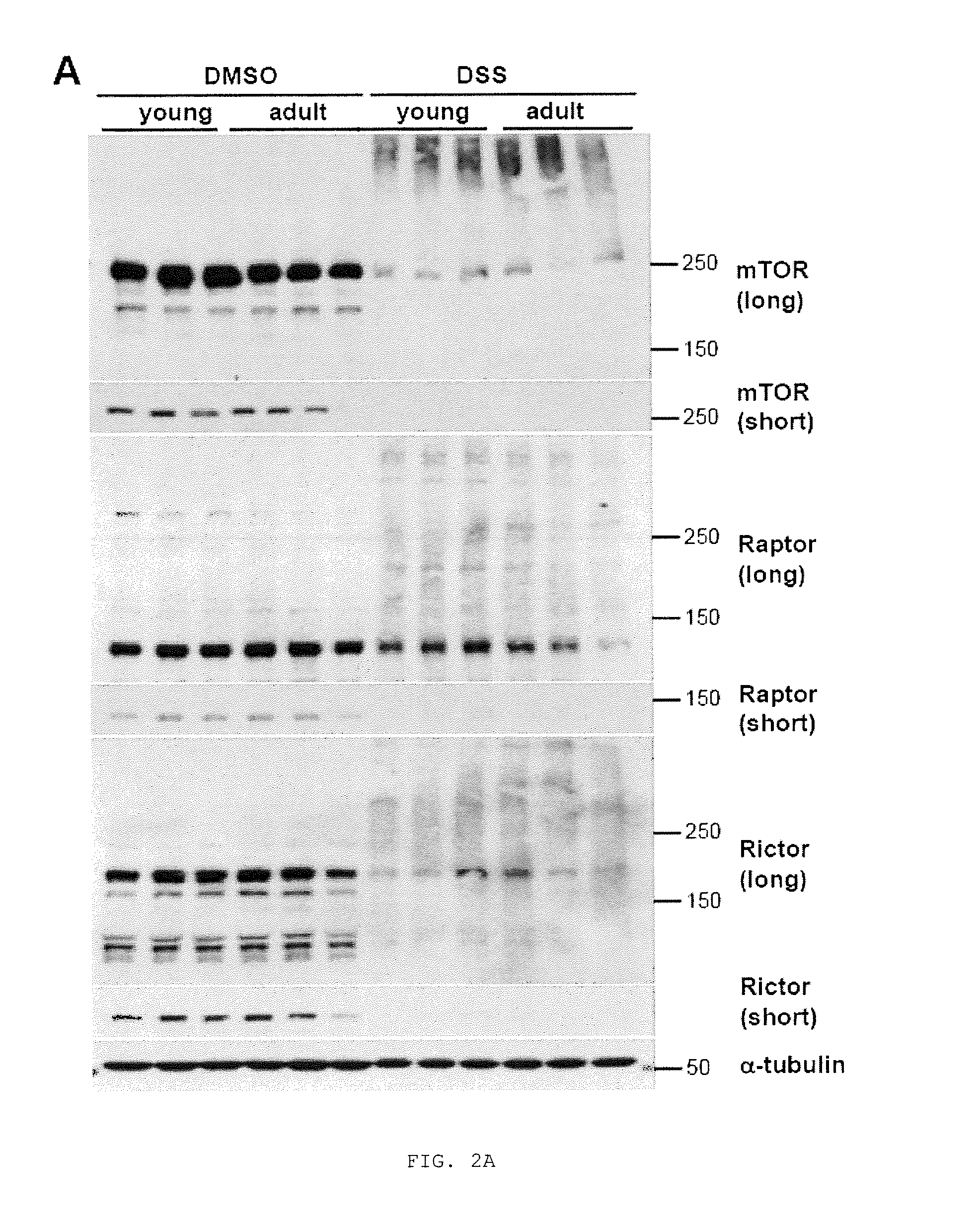Free raptor reduces aging- and obesity-induced fatty liver
a free raptor and liver technology, applied in the field of free raptor, can solve the problems of limiting the available organs, and achieve the effect of increasing phlpp2, and reducing the subject's hepatic and plasma triglyceride levels
- Summary
- Abstract
- Description
- Claims
- Application Information
AI Technical Summary
Benefits of technology
Problems solved by technology
Method used
Image
Examples
example 1
[0463]“Free” Raptor Levels Decline in Aged and Obese Liver
[0464]Although mTORC1 activity is canonically and obligatorily activated by nutrient availability (Kim et al., 2002), another layer of regulation has recently been demonstrated at the level of mTORC1 complex stability (Pajvani et al., 2013). To clarify the mechanism underlying mTOR component association in liver, size-exclusion chromatography was used to fractionate detergent-free liver lysate from young, chow-fed mice. Interestingly, while the vast majority of mTOR and GβL protein was found in high-molecular weight (˜800 kDa) fractions, consistent with mTORC1 complex dimers (Jain et al., 2014; Menon et al., 2014; Yip et al., 2010), Raptor is distributed evenly in mTORC1-associated and -free Raptor (˜150 kDa) fractions (FIGS. 1A and 1B). As mTORC1 function in liver is known to be modulated by aging and diet—L-Raptor mice show aging-dependent defects in ketogenesis (Sengupta et al., 2010), as well as reduced hepatic triglyceri...
example 2
[0467]Rescue of Free Raptor Levels Prevents Aging and Obesity-Dependent Hepatic Steatosis
[0468]It was predicted that exogenous delivery of Raptor would increase the Raptor / mTOR ratio, and acutely, free Raptor levels. Adenoviruses expressing control (Ad-GFP) or Raptor (Ad-Raptor) were generated to induce moderate liver-specific Raptor overexpression (FIG. 3A). As predicted, the majority of overexpressed Raptor eluted at ˜150 kDa, distinct from mTOR-containing fractions (FIG. 3B). Next, whether increasing free Raptor levels would prevent hepatic steatosis associated with insulin resistance induced by two different pathophysiologic conditions—aging and obesity were tested. First, aged (10-12 month-old), wild-type mice were transduced with Ad-GFP or Ad-Raptor. No difference in body weight or adiposity was found (FIGS. 3C and 3D), but observed that livers from Ad-Raptor mice were smaller (FIG. 3E) and less pale in color (data not shown). As predicted from the gross anatomic appearance, A...
example 3
[0470]Increasing Free Raptor Levels Reduces Fatty Acid Synthesis
[0471]Given the known hepatocyte tropism of adenovirus (Wang et al., 2001), it was hypothesized that Raptor overexpression reduced hepatic TG in a cell-autonomous manner. Indeed, no difference were observed in food intake, body weight, non-esterified fatty acid (NEFA) or plasma cholesterol levels (not shown and FIGS. 5D-5F), although plasma TG was lowered in parallel with hepatic TG in both aged (FIG. 4D) and adult (FIG. 4E) Ad-Raptor mice. Next, 3H2O was injected into Ad-Raptor and control mice, and incorporation of label was measured into newly synthesized hepatic fatty acid by de novo lipogenesis (DNL).
[0472]Expectedly, aging was associated with increased DNL (FIG. 4F, FIG. 63C), and a trend towards higher expression of key lipogenic genes, Srebp1c, Fasn (fatty acid synthase), Acc1 (acetyl-CoA carboxylase 1), and Scd1 (steroyl-CoA desaturase 1) (FIG. 4G, FIG. 63B), all of which was reversed by increased free Raptor. ...
PUM
| Property | Measurement | Unit |
|---|---|---|
| molecular weight | aaaaa | aaaaa |
| pH | aaaaa | aaaaa |
| concentration | aaaaa | aaaaa |
Abstract
Description
Claims
Application Information
 Login to View More
Login to View More - R&D
- Intellectual Property
- Life Sciences
- Materials
- Tech Scout
- Unparalleled Data Quality
- Higher Quality Content
- 60% Fewer Hallucinations
Browse by: Latest US Patents, China's latest patents, Technical Efficacy Thesaurus, Application Domain, Technology Topic, Popular Technical Reports.
© 2025 PatSnap. All rights reserved.Legal|Privacy policy|Modern Slavery Act Transparency Statement|Sitemap|About US| Contact US: help@patsnap.com



